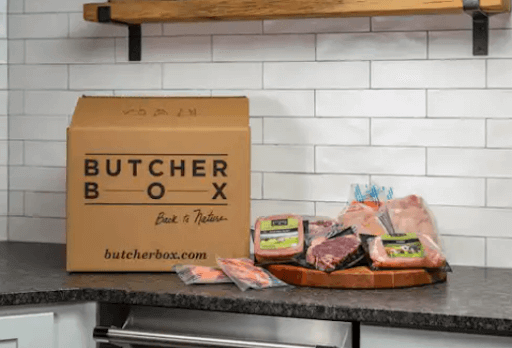What are the food ecommerce trends on the horizon for 2023?
First, let’s remember that in the not-so-distant past, the only way a food brand could survive was to get buy-in from global grocery chains and ample shelf space. Before the explosion of online grocery shopping, these brands had to focus on wholesale to succeed.
In 2023, food ecommerce continued to gain popularity as customers shop online to save time and for contactless pick-up.
But what should we expect to see from our favorite food brands in the coming year? And, even more importantly, how can you take advantage of these trends if you operate a food brand?
Read on to learn more about 6 food ecommerce trends you need to know.
1. The Direct-to-Consumer Food Ecommerce Trend
Direct-to-consumer has become the favored model for newer fashion and beauty brands as malls, and department stores struggle to keep their doors open.
The food industry has been slower to adopt ecommerce because of the reliance on the big global food chains and grocery stores, but now is the perfect time to start the shift to DTC.
The last few years have shown the true value of sending your customers to your owned channels (e.g., your website and email lists) to purchase your products. Not only do you have a way to communicate with your customers, but it's easier to upsell and retain them this way.
Don’t look for food brands to exclusively go online, but look for them to start crafting the ultimate omnichannel strategy to grow brand awareness and loyalty and improve customer experience.
It’s a smart strategy to adopt as brands that have taken an omnichannel approach have fared better in the past and are likely to continue to.
Food companies that focus on increasing their sales straight from the customer vs. from their wholesale contracts will create more stability for their business.
From ordering online and picking up in-store to recurring delivery and beyond, food ecommerce will be meeting consumers where they want to be in 2023.
Even meat products that have traditionally only been available in-store will have increasing popularity in the DTC space after learning from companies like Wild Pastures and ButcherBox.

2. Getting Ecommerce Sites Up to Speed
In 2023, having a basic ecommerce site is not going to cut it.
When COVID-19 struck, and almost all products were forced to move online, consumers accepted that some brands' online stores weren’t as user-friendly as they could be. Shoppers empathized with the food industry that was used to meeting its customers in person, typically on a shelf.
Now that some time has passed, so has the consumer’s patience for a poorly designed ecommerce site that is difficult to navigate and doesn’t build trust.
The food industry needs to step up and make it easy for its customers to find what they need and purchase it online.
They need to have pages dedicated to ingredient transparency, their process, and what makes their product the better choice. In other words, they need to have strong USP messaging.
Brands will need to understand the key UX design principles when setting up their ecommerce platforms.
Food and beverage brands that add extra touches like lifestyle product photography, personalized recommendations, and free shipping will win extra points with the savvy online shopper and newcomers alike.

Other ways to improve your ecommerce store experience can be:
- Providing multiple payment options
- Offering guest checkout
- Adding a one-step buy button
- Displaying social media proof
- Being mobile-friendly
- Improving page load speed
Companies moving into the food ecommerce space will need to make it easy to order from their website or risk losing customers to their competitors who do.
3. Push To Expand Food Subscription Trends
The ecommerce subscription model has been around for a few years, and many forecasted the trend to start fading...
But 2023 stopped that idea in its tracks.
With in-store retailers not sure what’s next, it will be harder for new food and beverage startups to enter the wholesale market in the first place.
A subscription model is a perfect place for those brands to start.
Even with established brands, food ecommerce will require a push to generate monthly subscription revenue to replace a portion of the predictable wholesale revenue for the brands that begin to focus on their own channels.
Amazon has already pioneered the way with its Subscribe & Save program, which already includes several big-name brands like Dole, Planters, and Oreo.

Food requires special considerations around where it is housed and how long it sits, adding extra complexity to the supply chain.
Month-to-month ecommerce subscriptions allow brands to plan ahead for production and create a more steady income stream.
While this business model comes with a few extra headaches, it's worthwhile for brands as margins on subscriptions can be higher than with traditional wholesale. Ecommerce subscription software can help you manage everything so that it doesn't become a headache.
Start looking forward to your favorite food products being available on home delivery every month.
4. Non-Alcoholic Movement Continues to Grow
Sales for non-alcoholic drinks grew to $11 billion in 2022. This is in large part due to changing sentiments when it comes to drinking alcohol to fit in. Gen Z drinks less than any other previous generation and views excessive alcohol consumption as the cause of many issues like sexual abuse and anxiety.
As drinking less becomes the norm, alcohol giants are shifting their attention toward creating drinks that cater to the “sober curious” crowd. Heineken launched their 0.0 non-alcoholic beverage earlier this year, emphasizing its great taste without alcohol.
We are also seeing native ecommerce brands like Mingle Mocktails, Unspiked, and Sans promote how it’s possible to have fun and party while remaining sober.

5. TikTok’s Effect On Food Marketing And Advertising
As the fastest-growing social media channel currently, TikTok’s emphasis on catchy songs and creative short-form content has captured our hearts and our limited attention spans. But it’s also the perfect recipe combination for food ads. A catchy hook paired with a trending challenge has advertisers turning to TikTok for ad inspiration as they look to connect and engage with Gen Z.
Recipes or ingredients that go viral on TikTok are also capturing the attention of food retailers. Food trends like mini pancake cereal or pink sauce are now products that consumers can purchase and try for themselves. You can now find the infamous pink sauce in stores and online on Walmart’s site.

To get the most exposure for your products, look into partnering up with rising food influencers on TikTok. Showing how your product can be used in a recipe or doing a taste test review are popular ways to promote your offerings.
By pairing with food bloggers, chefs, or amateur reviewers, brands can reach new audiences and gain valuable brand assets they could use across their marketing channels.
Brand collaborations
Pepsi’s collaboration with candy brand Peeps created major social media buzz in 2021 and caused the limited edition release to end up on the resale market for hundreds of dollars.
Now Pepsi x Peeps have collaborated again on a larger scale with a marshmallow-flavored cola drink as a must-have seasonal beverage for spring.

Fans who purchase a drink can scan the can with a Snapchat lens to play a virtual egg hunt and win limited edition Pepsi x Peeps merch and other prizes.
5. Collaborations To Solve Shipping and Delivery Logistics
Shipping costs are increasing. Delivery services keep popping up but dig deep into profits. What’s an ecommerce food brand to do?
Collaborate, of course.
Not only does it grow each brand's audience, as you already read, but it can help them cut costs.

Partnering with the giants
As you know, Amazon and Walmart are delivery giants with expansive delivery operations. Through Amazon Fresh, the ecommerce giant can already offer same-day delivery on food items.
Food brands can partner with them to improve their shipping logistics and upgrade their delivery services for their products. Earlier this year Starbucks announced a partnership with food delivery app DoorDash. Customers can now order directly on the Doordash app and customize their drinks. They plan to go nationwide later this year.
Look for any brands that haven’t already joined forces with them to do so in the coming year.
Collaborating with sister brands
Companies with sister brands will also look to collaborate to offer packaged delivery services resulting in lower costs from less packaging and fewer deliveries. This isn’t just a strategy for large brands like Kraft, though.
Smaller food companies can seek out complimentary products to take advantage of the trend as well.
Refining product lines
Food companies will start to refine their ecommerce product offerings to only include items that are easier to ship.
Some brands will offer a small selection of their best-selling food products online and keep the harder-to-deliver alternatives as an in-store-only option.
This will be especially true for heavy or frozen products.
6. Global Food Ecommerce Is Green
Aiming at (and run by) consumer-conscious millennials, brands have been able to develop a USP around promoting environmentally friendly practices and products in their business.
Those days are coming to an end, as the push for better practices is now at the forefront of everyone’s minds.
Look for global food ecommerce to become greener in 2023 and beyond by focusing on the three biggest issues.
Sustainable packaging
Sustainable ecommerce packaging has come a long way.
Recycled, biodegradable, reusable, and plastic-free options are readily available to companies.
Look for these options to become even more robust as food ecommerce will shift to better packaging options for their products to do their part to reduce waste while increasing online sales.
Environmentally friendly delivery
How can companies get more packages to consumers without hurting the environment?
This will be the biggest logistic chain question of the next decade. Brands like HelloFresh have been criticized in the past for their excessive and wasteful packaging, which has made them rethink their packaging needs.

Creating educational landing pages that teach customers which items are recyclable and compostable can go a long way in becoming a more sustainable brand.
2023 will continue the push for improved delivery chains with a focus on sustainability.
Sustainable production
Delivery isn’t the only process that will become more sustainable.
Food production is becoming more sustainable as well, with many of these food producers selling directly to their customers.
Vertical farms growing starter vegetables and microgreens that sell at local markets. Farmers invest in new technology and processes that reduce their carbon emissions to provide their products to major food retailers.
The improvements coming in production processes will have the largest impact on the industry long term.
Make Your Customers Hungry for Your Brand
Food and beverage brands that were early DTC adopters will have an edge going forward if the old-school brands don’t pick up on these trends quickly.
They have the advantage of already understanding ecommerce consumer behavior, user-friendly websites, and optimized production and delivery methods.
Hungry for more insights from the world of ecommerce? Sign up for The Ecomm Manager to receive all the latest expert content.
More great ECM content:
- 6 Key B2B Ecommerce Trends For 2023
- Top 10 Ecommerce Technology Trends Of 2023
- 5 Social Ecommerce Trends For Your Online Strategy In 2023
- Mobile Ecommerce Trends for 2023: The Statistics Say It All
- 6 Global Ecommerce Trends For 2023 & How To Take Advantage
- Ecommerce Growth Trends: What’s Happening For 2023?
- 5 Must-Know Alcohol Ecommerce Trends For 2023


